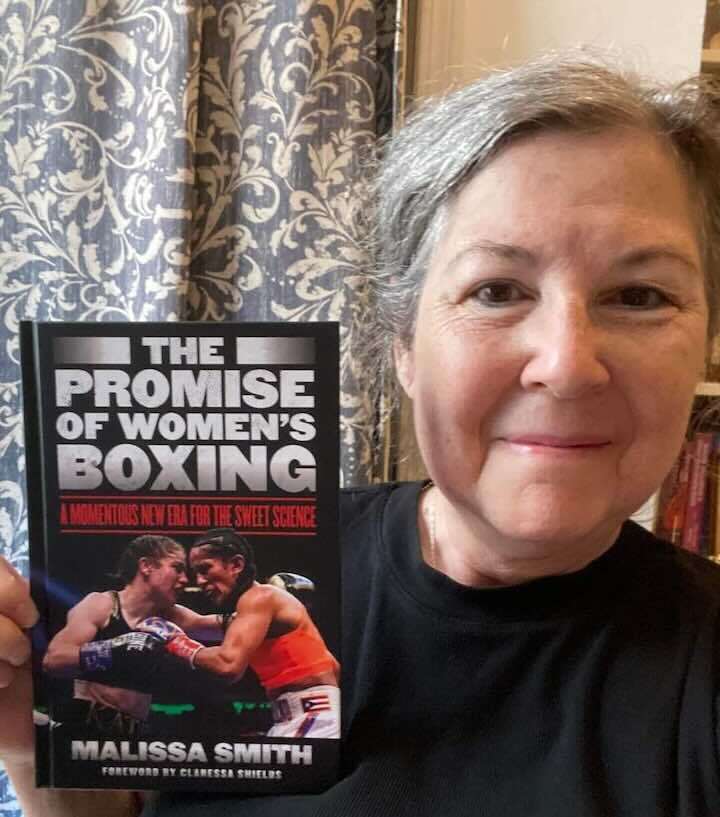The Bible never had a sequel, but thankfully for fans of the sweeter science, the bible of the sport, “A History of Women’s Boxing,” now has a second volume. And there has been plenty for author Malissa Smith to write about in “The Promise of Women’s Boxing” in the decade since the first one was published.
“The inclusion of the Olympics, for one, is the game changer. And I would also say that the quality of female boxing has grown exponentially since Christy Martin fought Deirdre Gogarty on a Mike Tyson card,” said Smith. “So that's 28 years ago. And in 28 years, the level of ability has just gone off the charts. You watch Katie Taylor and Amanda Serrano, and it's as good as boxing gets.”
It’s hard to believe that almost three decades have passed since Martin and Gogarty threw down at the MGM Grand in Las Vegas, effectively putting a largely underground sport on the map. Following the bout, Martin landed on the cover of “Sports Illustrated,” and for a time, fans eagerly followed the exploits of Martin, Lucia Rijker, Laila Ali, Ann Wolfe and their peers.
But then there was a lull and women’s boxing was underground again. However, when female boxers began competing in the 2012 Olympics, like Smith said, it was a game changer. And that’s where “The Promise of Women’s Boxing” begins, although there is a lengthy introduction to catch readers up to speed with the history covered in the first volume.
One would assume that covering 12 years and counting is preferable to writing a history dating back to the 1700s, especially since Smith is an active writer for various publications, as well as a member of “The Ring” magazine’s women’s boxing ratings committee, making her someone documenting history as it happened. But it wasn’t all roses on the way to making deadline.
“I will just say it had different challenges,” she said. “The good news is, you're writing about a contemporary subject that you're living through. And so there's all this opportunity for a lot of resources, especially now in the last 10 years. Now it's everywhere, and there's YouTube videos and what the fighters put out. So there's a lot more material to access. Plus, I got to interview a fair number of people. The challenge is, what's the story? What's the angle? And given that this is only one of two books published in 10 years, the pressure is enormous to get it right.”
She did. Just as in “A History of Women’s Boxing,” Smith gives a comprehensive look at an underappreciated sport while making it entertaining and insightful. This is not a recitation of facts; instead, it tells a compelling story, not just of the big names who have dominated the sport in the last decade, like Claressa Shields (who wrote the foreword), Katie Taylor and Amanda Serrano, but of the fighters who still operate below the radar.
“I would say I definitely didn't want to write a reference book,” said Smith. “The idea of this was to tell the story and to present the fighter's perspective on what they were doing and why. I focused on different fighters at different points in time. I also wanted to write about the women who were fighting and winning titles at the cusp of the Olympics to contrast how different their experience was compared to the Olympians when they became professional fighters. I really wanted to demonstrate how different these fighters were treated, what their opportunities were, the demands they could make that no one else could ever make, and how the momentum shifts. So that was very important to me.”
But what of the promise of women’s boxing? Is Smith optimistic about the future?
“I'm guardedly optimistic,” she said. “I believe in the women who are fighting, and I believe that they have even more tools in their toolkit. They're using social media brilliantly. They're learning how to be entrepreneurs to sell themselves, and they're not putting up with s***. And you've got a real sense of boxing sisterhood that is also starting to be a real thing, and I think there's a real sense that if we don't help each other, nobody's going to help us ever.”


ADD COMMENT VIEW COMMENTS (1)